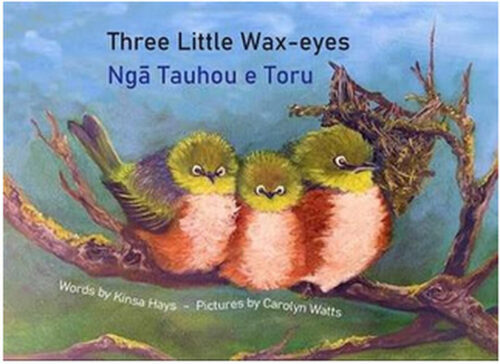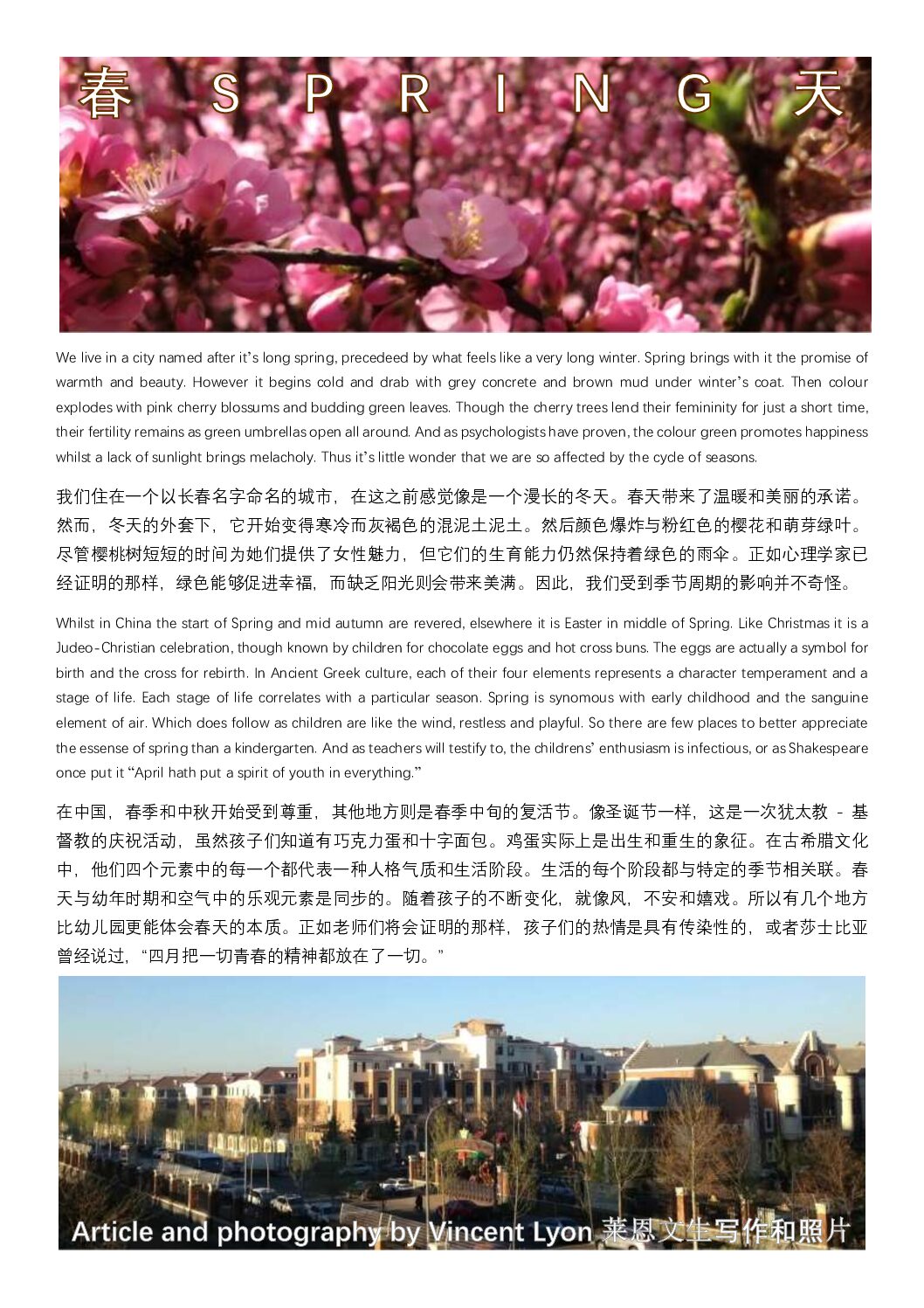-
 The Adventures of Crimson and the Guardian BOOK TWO: The Return to Deephaven For over two hundred years, no one has dared attempt to enter the Deephaven caves—not since the two-headed, dragon-like tworns viciously attacked the dwarves who lived there and took the caves for their own. But since their overwhelming defeat at the Battle of the Snake, everyone wants to know how many tworns are still alive. And there’s only one way to find out—do what no one has chanced for decades—disregard common-sense and venture inside the caves. Armed with not much more than her dragon-dagger and her courage, Kinsey makes the journey with Crimson, the wise and insightful unicorn, ever beside her. The cave-hating but tworn-ready young dwarf, Anvil Treegrasper, reluctantly joins them. However, ferocious tworns are not the only danger in their path. An unlikely but cunning spell master has one thought on his mind—steal the Pendant of Peace worn around Kinsey’s neck for his own deadly purposes. And he is closer than Kinsey could ever imagine, with a powerful black crystal full of evil enchantments that could destroy them all.
The Adventures of Crimson and the Guardian BOOK TWO: The Return to Deephaven For over two hundred years, no one has dared attempt to enter the Deephaven caves—not since the two-headed, dragon-like tworns viciously attacked the dwarves who lived there and took the caves for their own. But since their overwhelming defeat at the Battle of the Snake, everyone wants to know how many tworns are still alive. And there’s only one way to find out—do what no one has chanced for decades—disregard common-sense and venture inside the caves. Armed with not much more than her dragon-dagger and her courage, Kinsey makes the journey with Crimson, the wise and insightful unicorn, ever beside her. The cave-hating but tworn-ready young dwarf, Anvil Treegrasper, reluctantly joins them. However, ferocious tworns are not the only danger in their path. An unlikely but cunning spell master has one thought on his mind—steal the Pendant of Peace worn around Kinsey’s neck for his own deadly purposes. And he is closer than Kinsey could ever imagine, with a powerful black crystal full of evil enchantments that could destroy them all. -
 You could say this is the story of an ordinary boy who lived life to the full, growing up in the 1940s to manhood in the 1950s. Peter was born in Grimsby England in 1936 three years before the start of World War 2. Grimsby then was the world’s premier fishing port. He was the youngest of three brothers and four sisters. In his first seven years, he hardly knew his merchant seaman father and brothers because they were fighting for their country. After the years in war-torn Grimsby and many unhappy school days, Peter discovered in sports — mainly football, cricket and fishing — a refuge from the classroom. He left school at fifteen with a school report that said, “You must do better.” He began his apprenticeship in 1951 with the Grimsby Humber Graving Dock where after five hard years he earned his qualification as a steel fabricator, skills that later took him on many interesting worldwide journeys south from Grimsby. In 1964 Peter and his wife, Patricia emigrated to Africa. While living in Africa, he raised two children making these important years. The work he took in different countries demonstrated that this Grimsby lad could indeed, and would do better! Now Peter and his wife Patricia are enjoying their final journey retiring in Tauranga, New Zealand’s sunny Bay of Plenty.
You could say this is the story of an ordinary boy who lived life to the full, growing up in the 1940s to manhood in the 1950s. Peter was born in Grimsby England in 1936 three years before the start of World War 2. Grimsby then was the world’s premier fishing port. He was the youngest of three brothers and four sisters. In his first seven years, he hardly knew his merchant seaman father and brothers because they were fighting for their country. After the years in war-torn Grimsby and many unhappy school days, Peter discovered in sports — mainly football, cricket and fishing — a refuge from the classroom. He left school at fifteen with a school report that said, “You must do better.” He began his apprenticeship in 1951 with the Grimsby Humber Graving Dock where after five hard years he earned his qualification as a steel fabricator, skills that later took him on many interesting worldwide journeys south from Grimsby. In 1964 Peter and his wife, Patricia emigrated to Africa. While living in Africa, he raised two children making these important years. The work he took in different countries demonstrated that this Grimsby lad could indeed, and would do better! Now Peter and his wife Patricia are enjoying their final journey retiring in Tauranga, New Zealand’s sunny Bay of Plenty. -
 Fourteen-year-old Aleryck is good with a slingshot and at herding goats, but not much else. When the mysterious voice of ‘The Ancient’ tasks him with inscribing words of freedom on a magical tablet, he starts to believe he is important … more important even than his elder brothers. Then the Ancient asks Aleryck to hide the tablet in Medar--beyond the perilous Chasm--for a future generation, forcing Aleryck to reluctantly seek the help of his jealous siblings. Left for dead in the treacherous Wastelands when his brother, Taran, steals the tablet, it soon becomes a race against time to recover the tablet or it will be lost forever. If Aleryck and Taran can't settle their differences and learn to work together to fulfil the task, the people of Medar will be enslaved for all eternity.
Fourteen-year-old Aleryck is good with a slingshot and at herding goats, but not much else. When the mysterious voice of ‘The Ancient’ tasks him with inscribing words of freedom on a magical tablet, he starts to believe he is important … more important even than his elder brothers. Then the Ancient asks Aleryck to hide the tablet in Medar--beyond the perilous Chasm--for a future generation, forcing Aleryck to reluctantly seek the help of his jealous siblings. Left for dead in the treacherous Wastelands when his brother, Taran, steals the tablet, it soon becomes a race against time to recover the tablet or it will be lost forever. If Aleryck and Taran can't settle their differences and learn to work together to fulfil the task, the people of Medar will be enslaved for all eternity. -
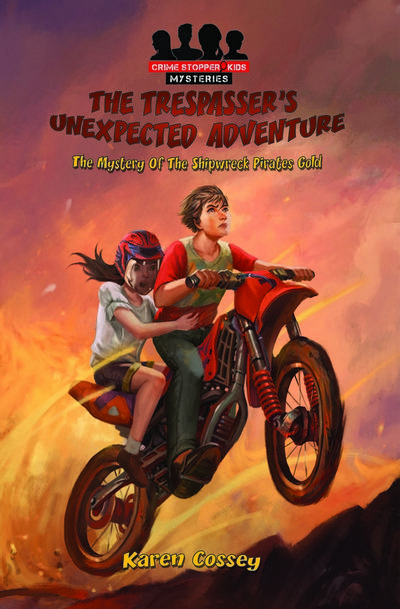 Logan hadn’t bargained on making friends with a secretive, rich and mysterious family when he’d trespassed onto the private beach by abseiling down a cliff that first morning of school half-term break. But his “be alone” plans are interrupted when he meets the adventurous Meeka and her secretive, mysterious parents. After spending a thrilling day full of adventure and Ferraris, he finally realises the identity of his mysterious new friends—but what’s better, with the help of their friendship, it looks like that elusive sense of belonging is finally within his grasp. Until his older foster brother shatters his hopes for his new friendship. But it’s not just his happiness that is at stake as a mystery unfolds around them. His suspicions of a shipwreck pirates’ smuggling ring turn into reality, putting Meeka and his life, plus the lives of his foster family, at risk. Caught by the ruthless pirates, they are all tied up and held captive, but a bigger shock is still to come, one that will hit Logan the hardest. How can he possibly escape now?
Logan hadn’t bargained on making friends with a secretive, rich and mysterious family when he’d trespassed onto the private beach by abseiling down a cliff that first morning of school half-term break. But his “be alone” plans are interrupted when he meets the adventurous Meeka and her secretive, mysterious parents. After spending a thrilling day full of adventure and Ferraris, he finally realises the identity of his mysterious new friends—but what’s better, with the help of their friendship, it looks like that elusive sense of belonging is finally within his grasp. Until his older foster brother shatters his hopes for his new friendship. But it’s not just his happiness that is at stake as a mystery unfolds around them. His suspicions of a shipwreck pirates’ smuggling ring turn into reality, putting Meeka and his life, plus the lives of his foster family, at risk. Caught by the ruthless pirates, they are all tied up and held captive, but a bigger shock is still to come, one that will hit Logan the hardest. How can he possibly escape now? -
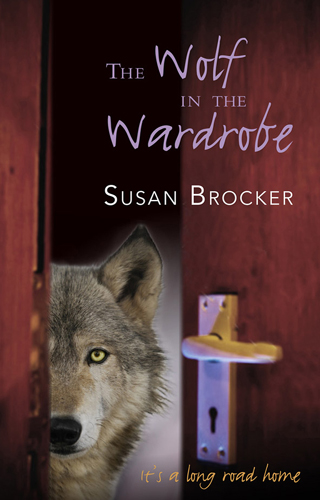 Finn had seen those eyes before. They were golden yellow, like the colour of the moon hanging low in the sky. And they were full of pain. When Finn comes across a car accident, little does he realize his life is about to change forever. The huge, injured animal he discovers is no dog ‑ but a wolf, escaped from the circus. Finn is bewitched. Instinctively, he knows he must save the wolf, Lupa, and prevent her return to the cruel circus. Where to hide the wolf, and how to feed her, are just the beginning of Finn's problems. For the sinister circus clown, Cackles, is hot on their trail and will stop at nothing to get Lupa back. In a race against time to save Lupa, Finn gets help from unlikely quarters. But will it be enough? Like many of my books, The Wolf in the Wardrobe was inspired by one of our much-loved pets. Yogi is a long-haired German shepherd and he adores playing with kids. But people often say to me when they first meet him, "He looks like a wolf!" And that got me thinking – imagine if he really was a wolf!
Finn had seen those eyes before. They were golden yellow, like the colour of the moon hanging low in the sky. And they were full of pain. When Finn comes across a car accident, little does he realize his life is about to change forever. The huge, injured animal he discovers is no dog ‑ but a wolf, escaped from the circus. Finn is bewitched. Instinctively, he knows he must save the wolf, Lupa, and prevent her return to the cruel circus. Where to hide the wolf, and how to feed her, are just the beginning of Finn's problems. For the sinister circus clown, Cackles, is hot on their trail and will stop at nothing to get Lupa back. In a race against time to save Lupa, Finn gets help from unlikely quarters. But will it be enough? Like many of my books, The Wolf in the Wardrobe was inspired by one of our much-loved pets. Yogi is a long-haired German shepherd and he adores playing with kids. But people often say to me when they first meet him, "He looks like a wolf!" And that got me thinking – imagine if he really was a wolf! -
 A baby is missing… When Maryanne Anderson receives a call on a beautiful December morning she has no idea her life is about to change forever. Sitting under the shade of the Jacaranda tree with baby Josh, she feels happy and relaxed. Mikey their dog is wagging his tail and licking Josh’s face, making him giggle. When she hears the phone ring inside the house, she tells Mikey to watch over Josh and runs inside, leaving the door open behind her. But when she returns - Josh is gone. For Detective Inspector Ian Anderson, this case has never been more personal or heartbreaking. Josh is his baby. He and his team launch a massive search, but the trail goes cold. Devastated by the loss of their baby, Ian and Maryanne are plunged into a nightmare of fear and guilt. They blame themselves and each other. Their marriage threatens to crumble as they become obsessed with finding Josh. But Josh is not the first baby to be abducted. Someone knows what’s happening to these babies. Someone who will stop at nothing to keep the truth buried.
A baby is missing… When Maryanne Anderson receives a call on a beautiful December morning she has no idea her life is about to change forever. Sitting under the shade of the Jacaranda tree with baby Josh, she feels happy and relaxed. Mikey their dog is wagging his tail and licking Josh’s face, making him giggle. When she hears the phone ring inside the house, she tells Mikey to watch over Josh and runs inside, leaving the door open behind her. But when she returns - Josh is gone. For Detective Inspector Ian Anderson, this case has never been more personal or heartbreaking. Josh is his baby. He and his team launch a massive search, but the trail goes cold. Devastated by the loss of their baby, Ian and Maryanne are plunged into a nightmare of fear and guilt. They blame themselves and each other. Their marriage threatens to crumble as they become obsessed with finding Josh. But Josh is not the first baby to be abducted. Someone knows what’s happening to these babies. Someone who will stop at nothing to keep the truth buried. -
 During the 1800s published stories about Europeans captured by 'savages' thrilled and horrified British, Continental and North American audiences. Hugely popular and known as captivity narratives, they entertained urban audiences and frightened those still living on the frontiers. This anthology contains 20 first hand captivity accounts written or dictated by 16 men and four women captured by iwi throughout New Zealand between 1816 and 1884. Some were seized when they unknowingly transgressed tikanga Maori (the customary laws of tapu, utu, mana and muru). Others were seized when they or their countrymen were involved in committing blatant acts of aggression against Maori. Two of the women (Maria Bennett and Mary Jane Briggs) were captured when they were shipwrecked, as traditional Maori salvage law dictated that any craft and those aboard it, wrecked or stranded in tribal waters, automatically became tribal property. The captives were held for weeks, months and in several cases for years before they were rescued or ransomed, for utu (redress) could be obtained by preserving life as well as taking it. Some escaped and others were freed by their captors. Of interest to Bay of Plenty readers will be the captivity of John Atkins (Whakatane, 1829), George Budd (Opotiki, 1834) and James Curlett (Tauranga, 1867). A government surveyor seized at Paengaroa during the Tauranga Bush War of 1867, Curlett spent six months amongst Maori 'rebels' in the Kaimai Ranges before escaping and travelling to Cambridge. Packed with drama and action, the narratives create a vivid picture of Maori and Pakeha interactions during the 1800s. They also provide rich insights into Maori life, including the principles of captivity and utu, social order, religious practices, everyday customs and the conduct of warfare. Each narrative is followed by a brief essay providing historical and cultural context. This anthology makes an important contribution to understanding the cross-cultural tensions from which contemporary New Zealand society has emerged. Many anthologies containing first-hand accounts by Europeans captured by American Indians and North Africa's Barbary pirates have been published overseas. Transgressing Tikanga is New Zealand's first anthology of Maori captivity narratives.
During the 1800s published stories about Europeans captured by 'savages' thrilled and horrified British, Continental and North American audiences. Hugely popular and known as captivity narratives, they entertained urban audiences and frightened those still living on the frontiers. This anthology contains 20 first hand captivity accounts written or dictated by 16 men and four women captured by iwi throughout New Zealand between 1816 and 1884. Some were seized when they unknowingly transgressed tikanga Maori (the customary laws of tapu, utu, mana and muru). Others were seized when they or their countrymen were involved in committing blatant acts of aggression against Maori. Two of the women (Maria Bennett and Mary Jane Briggs) were captured when they were shipwrecked, as traditional Maori salvage law dictated that any craft and those aboard it, wrecked or stranded in tribal waters, automatically became tribal property. The captives were held for weeks, months and in several cases for years before they were rescued or ransomed, for utu (redress) could be obtained by preserving life as well as taking it. Some escaped and others were freed by their captors. Of interest to Bay of Plenty readers will be the captivity of John Atkins (Whakatane, 1829), George Budd (Opotiki, 1834) and James Curlett (Tauranga, 1867). A government surveyor seized at Paengaroa during the Tauranga Bush War of 1867, Curlett spent six months amongst Maori 'rebels' in the Kaimai Ranges before escaping and travelling to Cambridge. Packed with drama and action, the narratives create a vivid picture of Maori and Pakeha interactions during the 1800s. They also provide rich insights into Maori life, including the principles of captivity and utu, social order, religious practices, everyday customs and the conduct of warfare. Each narrative is followed by a brief essay providing historical and cultural context. This anthology makes an important contribution to understanding the cross-cultural tensions from which contemporary New Zealand society has emerged. Many anthologies containing first-hand accounts by Europeans captured by American Indians and North Africa's Barbary pirates have been published overseas. Transgressing Tikanga is New Zealand's first anthology of Maori captivity narratives. -
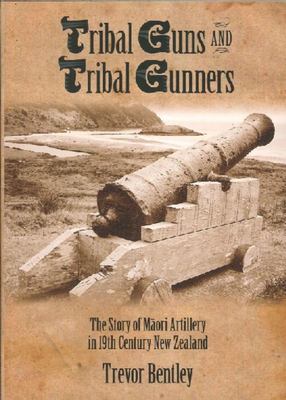
The Story of Māori Artillery in 19th Century New Zealand
European sailing ships arriving in New Zealand waters during the early nineteenth century, brought with them terrifying and destructive gunpowder weapons that Māori soon termed pū repo (great guns). Sold to some 120 chiefs in the shape of muzzle loading cannon, carronades and swivel guns, 165 documented artillery pieces were acquired by the coastal and inland tribes. Set during the bloody intertribal Musket Wars (1818-1839) and the Anglo-Māori New Zealand Wars (1845-46 and 1860-1872), this book reveals a hitherto unknown dimension of this country's military history. It brings to light the various ways Māori acquired, mastered and deployed ships artillery, ceremonially in times of peace, and as instruments of destruction in offensive and defensive warfare. It resurrects or reconstructs long forgotten accounts of tribal artillery pieces, artillerymen and artillery battles, whose details were known throughout old tribal New Zealand. The history of New Zealand artillery and artillerymen begins with the tribal gunners. The book describes their professional approach to gunnery and the impact of artillery on military tactics during the Musket Wars. It shows how artillery became the catalyst for a new type of amphibious campaign and contributed to the evolution of gunfighter pa designed to deliver and resist musket and artillery fire. Drawing on contemporary accounts by European visitors and settlers, and the Māori and Pākehā-Māori artillerymen themselves, this book combines modern scholarship with old tales of unbridled ambition, innovation, adventure, courage, and tragedy, to provide an engaging and full history of New Zealand's tribal guns and gunners. Events of the past leave various records and 24 of the original 165 tribal guns can still be seen on marae, within nearby urupa (graveyards), public parks and museums. Photographs of many of these guns and the chiefs who owned and fired them are included here to enhance their stories. -
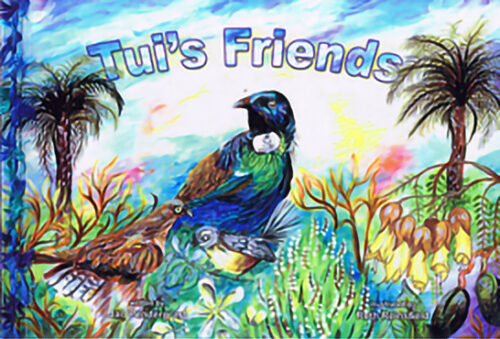 TUI’S FRIENDS, based on the antics of a bossy tui in Jan’s native garden, is a delightful picture book for three to ten year-olds, illustrated by Ruth Reinsfield. It is best read aloud to enjoy the alliteration used throughout the story. Your children will learn about the character of seven of New Zealand’s native birds and the native trees in which they live. It is published by Studio Seven Publishers in Inglewood, NZ. ISBN: 978-1-877219-93-1, 1877219932
TUI’S FRIENDS, based on the antics of a bossy tui in Jan’s native garden, is a delightful picture book for three to ten year-olds, illustrated by Ruth Reinsfield. It is best read aloud to enjoy the alliteration used throughout the story. Your children will learn about the character of seven of New Zealand’s native birds and the native trees in which they live. It is published by Studio Seven Publishers in Inglewood, NZ. ISBN: 978-1-877219-93-1, 1877219932 -
 What will Santa put under your tree this Christmas? A present that growls? Or one that smiles? The Best of Twisty Christmas Tales – crazy Christmas adventures for the whole family! Christmas in outer space or at the beach, havoc in Santa’s workshop, monsters running amok, and mad scientists who turn Christmas into chaos. Come along for the sleigh ride of your life, as these Twisty Tales weave their festive magic, whipping across New Zealand pastures, scattering fairy dust on the way to a Christmas BBQ! ISBN: 978-0994115508
What will Santa put under your tree this Christmas? A present that growls? Or one that smiles? The Best of Twisty Christmas Tales – crazy Christmas adventures for the whole family! Christmas in outer space or at the beach, havoc in Santa’s workshop, monsters running amok, and mad scientists who turn Christmas into chaos. Come along for the sleigh ride of your life, as these Twisty Tales weave their festive magic, whipping across New Zealand pastures, scattering fairy dust on the way to a Christmas BBQ! ISBN: 978-0994115508 -
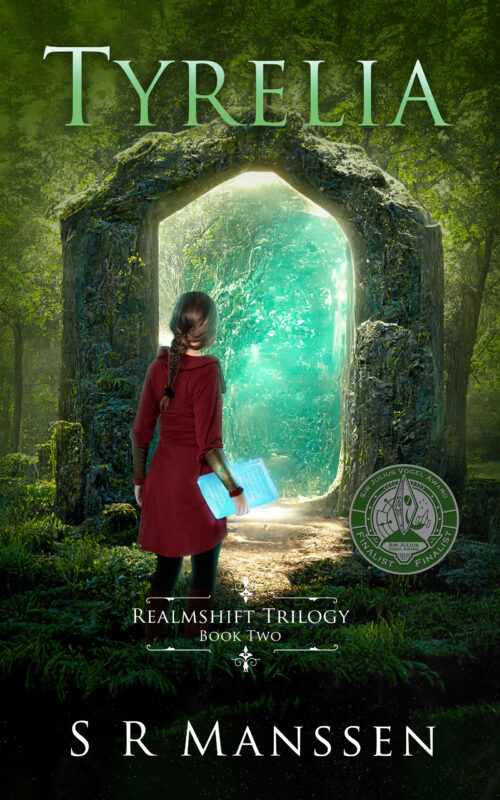 She escaped death. She unlocked the mystery of the Tablet to discover the long-lost bridge across the chasm. She passed through the Wall. But fourteen-year-old Freya's biggest challenge is yet to come: all alone, she must enter Tyrelia, following new clues that lead her on a new quest deep into Tyrelia. All communication lost, will Freya to find the Ancient before it’s too late for her family trapped in the Golden City, who are torn between trying to escape and being seduced by the guiles of the City? Tyrelia is the second book in the Realmshift Trilogy
She escaped death. She unlocked the mystery of the Tablet to discover the long-lost bridge across the chasm. She passed through the Wall. But fourteen-year-old Freya's biggest challenge is yet to come: all alone, she must enter Tyrelia, following new clues that lead her on a new quest deep into Tyrelia. All communication lost, will Freya to find the Ancient before it’s too late for her family trapped in the Golden City, who are torn between trying to escape and being seduced by the guiles of the City? Tyrelia is the second book in the Realmshift Trilogy -
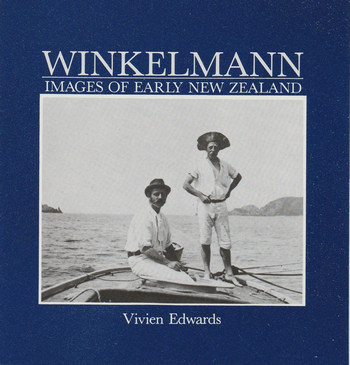
Winkelmann: Images of Early New Zealand
1988 New Zealand Book of the Year Award for Design and Production. Henry Winkelmann’s prize-winning photography took him on yacht cruises around New Zealand; on the 1903 Pacific Parliamentary tour, and solar eclipse expeditions to Flint Island, (1908), Port Davey, Tasmania (1910) and Vavau (1911). In 1881, he and Harold Hudson were stranded for eight months near the equator, after claiming guano covered Jarvis Island for Thomas Henderson of the Henderson and McFarlane Shipping Company. Henry worked for the BNZ around New Zealand; in Levuka, Fiji, and in Sydney. He played and taught the zither, farmed on Great Barrier Island; was an agent on Queen Street Wharf; secretary of the Coastal Steamship Company, and he invested in property around the country. He died in 1931. -
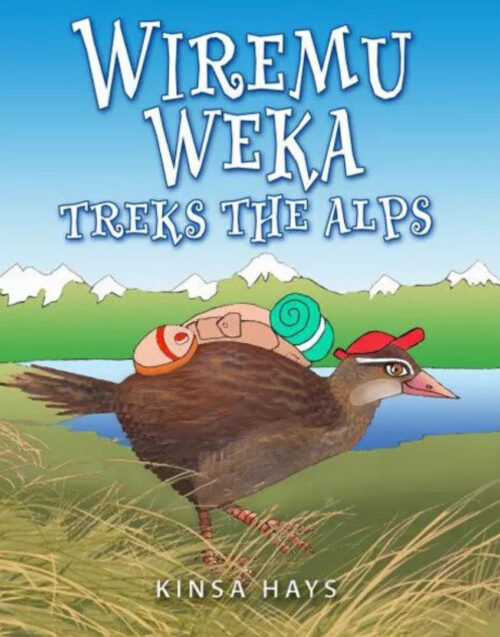 Wiremu Weka, chasing his stolen treasures, sneaks aboard the famous TranzAlpine express train, finding adventures as he crosses the Southern Alps of New Zealand. Trek along with this smart bird as he hangs out with the locals, steals stuff, saying 'Oh bugs'n'beetles' as he gets himself into trouble yet again. Fast paced and humorous, this story for 8-13-year olds is lavishly illustrated with photographs, facts and maps to educate and entertain. ISBN: 978-0473471279
Wiremu Weka, chasing his stolen treasures, sneaks aboard the famous TranzAlpine express train, finding adventures as he crosses the Southern Alps of New Zealand. Trek along with this smart bird as he hangs out with the locals, steals stuff, saying 'Oh bugs'n'beetles' as he gets himself into trouble yet again. Fast paced and humorous, this story for 8-13-year olds is lavishly illustrated with photographs, facts and maps to educate and entertain. ISBN: 978-0473471279 -

A Collection of Retold Fairy Tales
The Southern Cross shines high above a fairy tale wood. Come step inside. Drink dew from the leaves with tiny Tommelise. Eat egg sandwiches with a toothy young troll. Escape with Rapunzel. Trick Rumpelstiltskin. Shiver in the snow. Climb the beanstalk. Pray to the Piper. Be a cat. In and out of the wood, whether in this world or another, these stories will take you to new places. Explore how far you can go in this anthology of twenty-one fairy tale retellings by New Zealand and Australian authors. Teaching notes available at www.shelleychappell.com. -
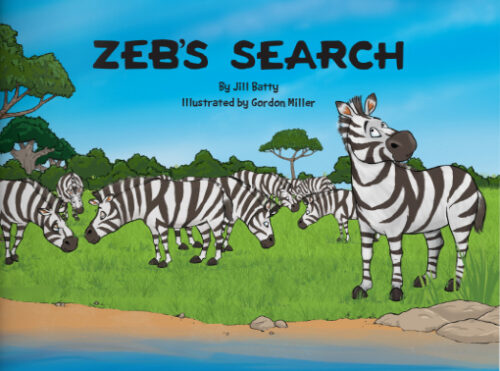 Zeb’s Search is about knowing who you are. He and his Mum and Dad belong to a herd of zebras in the wild where every boy is named Zeb and every girl is named Zed. One day Zeb realises he doesn’t want to share his name with so many others. He wants a name that is his, and his alone. So Zeb sets off to discover what that name should be. On his journey, he meets other animals in the wild, some friendly and some scary. They tell him their names, and he starts to see a pattern. When Zeb’s Search is over, will he know what name suits him best?
Zeb’s Search is about knowing who you are. He and his Mum and Dad belong to a herd of zebras in the wild where every boy is named Zeb and every girl is named Zed. One day Zeb realises he doesn’t want to share his name with so many others. He wants a name that is his, and his alone. So Zeb sets off to discover what that name should be. On his journey, he meets other animals in the wild, some friendly and some scary. They tell him their names, and he starts to see a pattern. When Zeb’s Search is over, will he know what name suits him best?


